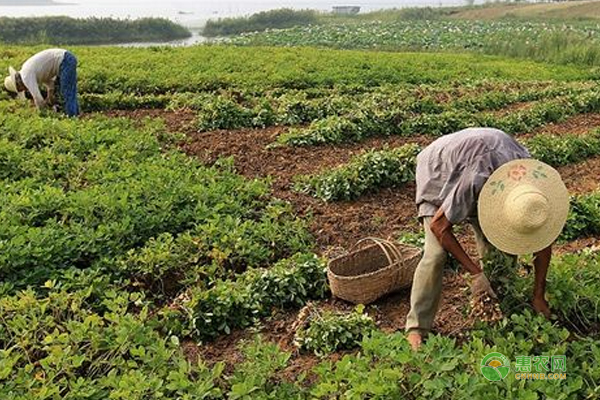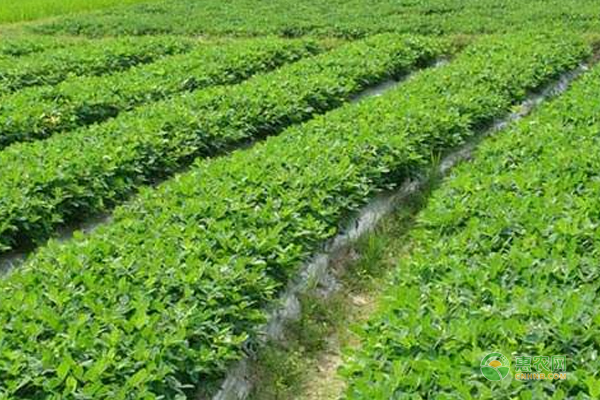In peanut planting, disease invasion is common, so the peanuts that are to be planted are of high yield, and the treatment and prevention of diseases are indispensable. The following are the cultivation techniques of peanut planting that can be achieved in high-yield, and the pests and diseases. ! I hope to help the growers!
The main diseases in the middle stage of peanut growth include leaf spot disease, stem rot, rust, chalk disease, root rot, and black mold. The method of combining disease prevention with foliar topdressing should be adopted. Spraying fungicides (carbendazim, methyl thiophanate, tebuconazole, ether bacillus, sputum, manganese, etc.) after the initial flowering + Mixture of micro-fertilizer (ammonium molybdate, sodium borate, etc.) 40-50 kg/mu, once every 15-20 days, even spray 3 times. It is necessary to pay attention to the different types of fungicides and different types of micro-fertilizers.

1. Several pests and diseases susceptible to peanuts in the middle and late stages and their control methods
(a) root rot
Peanut root rot occurs in all flower production areas across the country and generally occurs in sporadic.
1, symptom performance
Diseases occur in all stages of growth of peanuts. Peanuts can be inoculated with newly germinated seeds before emergence, resulting in rotten seeds. The pathogen is infiltrated into the lower part of the peanut seedlings, the main root turns brown, and the plant is short and withered. The bacteria can be infused with fruit needles and young pods. After the needle is damaged, the pod is easy to fall off in the soil. The combination of the pathogen and the probiotics infects the pods, which can rot the pods.

2, dip route and disease conditions
The pathogen is Fusarium. The bacteria overwintered on soil, diseased plants and seeds, becoming the second source of dip in the early years. The pathogen is strong and the thick stem spores can remain in the soil for a long time.
3. Prevention and treatment methods
The effect on seed treatment is obvious, and the method is the same as peanut stalk rot. In addition, timely planting, rational rotation, deep renovation of soil, clearing ditch drainage, etc. can alleviate the disease.
(2) Helicoverpa armigera
The Helicoverpa armigera is a Lepidoptera family of Lepidoptera, which occurs in both the north and south peanut production areas in China, and has a large area in the north. This insect is mainly used to drill peanut heart and flower buds in the morning and evening, which affects the growth and flowering of peanuts.

1. Prevention and treatment methods
Implement winter ploughing, watering, and eliminate wintering. When an adult is found in the peanut field, 4 to 5 pairs of poplar branches with a length of about 50 cm are tied into one, and more than 10 pieces per acre are inserted, and the moths are inserted between the rows of peanuts. Chemical control: Do a good job in measuring the insects, such as the eggs of the Panduan, 30 eggs (heads) and above. 30% of the eggs turn into beige, some eggs appear purple circle, and some have been cured during the incubation period. Each acre is sprayed with 2.5% kungfu 5000 times liquid and 2.5% Uranus EC 3000 times. It can also be diluted with 500-800 times solution of BT preparation, 2000-3000 times solution of 1.8% Averm extract ECS, 1000-1500 times solution of 70% endosulfan emulsifiable concentrate and 1000-1500 times of 50% zinc sulphur-phosphorus emulsifiable concentrate.
The invasion of pests and diseases is the world where all crops are planted. If there is no reasonable management, the crops will be seriously damaged. The high-yield cultivation techniques of peanuts compiled by Huinong.com are quick to see!
Stainless Steel Fire Cabinet,Red Stainless Steel Fire Cabinet,Stainless Steel Red Fire Cabinet,Stainless Steel Fireproof Cabinet
JIANGSU NEW FIRE FIGHTING TECHNOLOGY CO.,LTD , https://www.newayfire.com